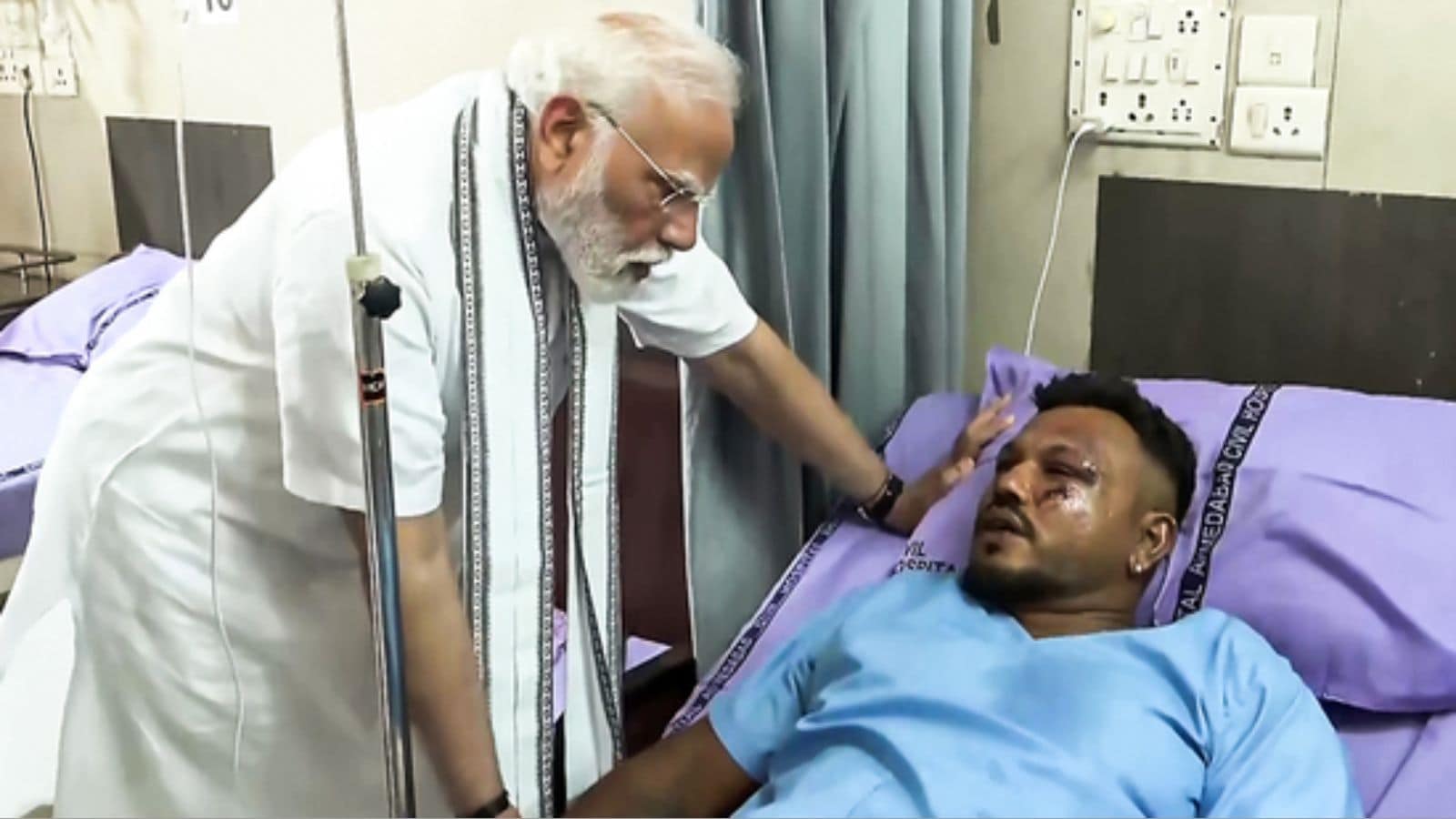Vishwaskumar Ramesh, the sole survivor of Thursday’s Air India flight 171 crash that killed 241 people, defied all odds to make it out alive. Remarkably, he escaped from the front of the aircraft—an area typically considered less safe than the rear in the event of a crash.
Kumar, who is currently recovering from injuries in a local hospital, told DD News — “The side of the plane I was on landed on the ground next to the hostel. When the door broke, I saw that there was space, and tried to get out. On the opposite side, there was the hostel, and I saw no one could leave from there. There was some space (to exit) only where I was (seated).”
 11-A was the seat where the sole survivour of the Air India crash was seated. (Photo: X/@Osint613)
11-A was the seat where the sole survivour of the Air India crash was seated. (Photo: X/@Osint613)
Row 11 on Boeing’s 787 Dreamliner—the aircraft that crashed into a hostel for medical students in Ahmedabad—is located just behind an exit door on either side, with business class seats positioned ahead. Seat 11A, a window seat, is right next to the exit door, with a cabin crew seat facing it directly in front.
“It all happened before my eyes. I myself can’t believe how I escaped alive. For some time, I also thought I’m going to die. However, when my eyes opened, I realised I’m alive. I removed my seat belt and tried to leave the plane. In front of me, an air hostess and some passengers were all dead,” Kumar said in the video interview.
Safest Seat
A confluence of factors would have resulted in Kumar coming out alive from the crash. Which is the safest seat in an aircraft and would 11A qualify? There is no clear answer. But the tail section is seen to be the safest from a statistical point of view.
Kumar was seated just ahead of the wing box area, the projected part of the wing that is structurally stronger than the rest of the aircraft. The wings are loaded with jet fuel and likely exploded on impact. Being ahead by three rows would have helped.
By sheer luck, the section of the aircraft where Kumar was seated struck the ground—unlike the tail, which lodged atop the hostel—and somewhat withstood the impact of the explosion. More importantly, an exit door immediately to his left, with open space outside, provided a clear path to escape, according to his testimony.
Story continues below this ad
Front — Less Safe
Statistically, the front of the plane—where Kumar escaped from—is considered less safe than the rear. The Time magazine, in a 2015 study, analysed 35 years of crash data up to that year and reported that fewer people who were sitting in the back died in plane crashes.
According to the study, seats in the back third of the aircraft had a 32 per cent fatality rate, compared with 39 per cent in the middle third, and 38 per cent in the front third. Looking at row position, the study found that the middle seats in the rear of the aircraft had the best outcomes (28 per cent fatality rate). The worst-faring seats were on the aisle in the middle third of the aircraft cabin (44 per cent fatality rate).
In April 2012, a team of television studios staged an airplane crash in Mexico, where a Boeing 727-200 fitted with crash test dummies and other scientific instruments was flown into the ground. The test result showed that passengers at the front of an aircraft would be the ones most at risk in a crash, while those seated closer to the airplane’s wings were reported as having suffered survivable injuries. The test dummies near the tail section were largely intact, so most passengers there would have likely walked away without serious injury.
Another study, done by American popular science magazine Popular Mechanics in 2007, found that those seated behind the trailing edge of the aircraft wing had a survival rate of 69 per cent. It was 56 per cent for those in the middle section, and 49 per cent for the seats in the front of the plane.
Story continues below this ad
These statistical trends are very specific to the circumstances of the crash in question. In some crashes, such as when the tail hits the ground first, fatalities could be higher in the rear of the aircraft. In others, where the front or the middle of the aircraft bears the major brunt of the impact, those in the rear may have a better shot at surviving the accident.
It is worth noting that the Time magazine study found that in a number of crashes, survival was random — “those who perished were scattered irregularly between survivors”.
The FAA has consistently stated that there is not any one section of an airplane that is more or less safe than another and that the most important thing passengers can do for their safety on any flight is follow crewmember instructions.


